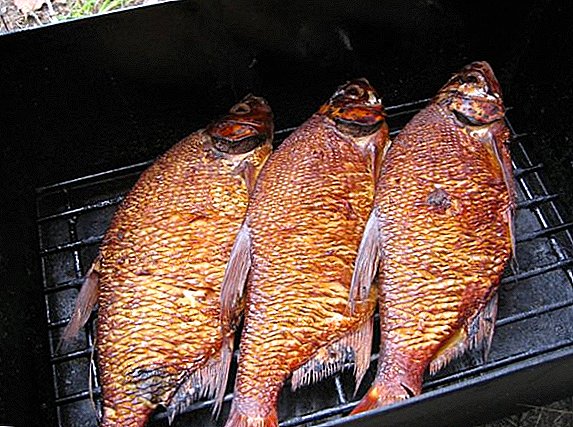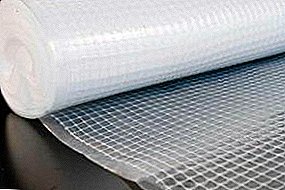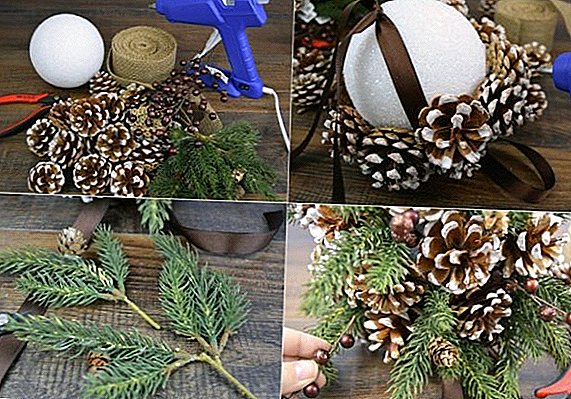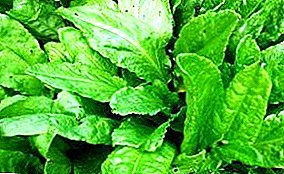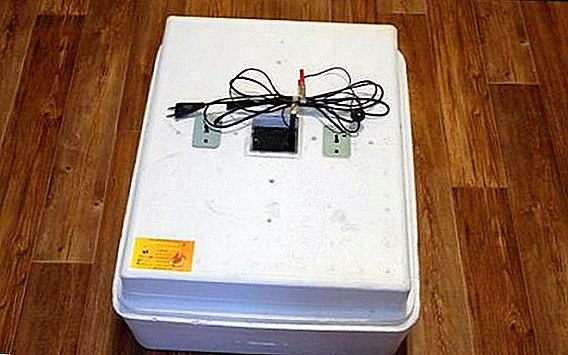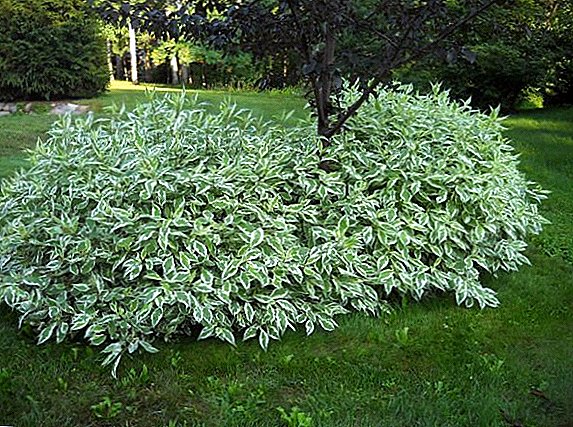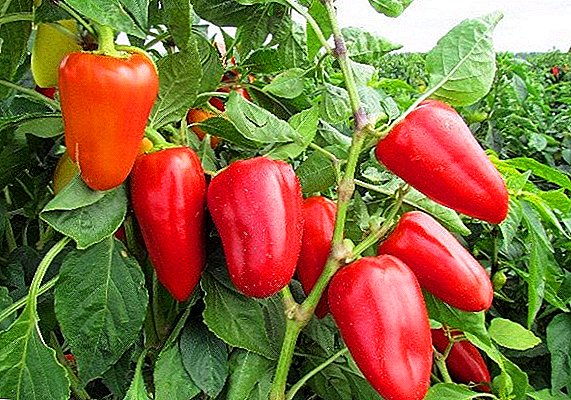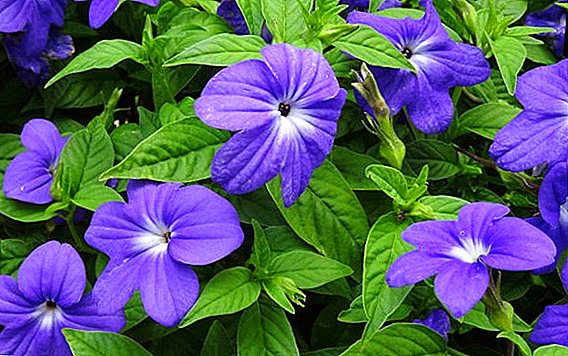 If you decide to grow at home, it is important to know how to properly care for this flower, how to propagate it, water it and fertilize it. Such important information will help even a beginner grower grow a healthy shrub. More on this in our article.
If you decide to grow at home, it is important to know how to properly care for this flower, how to propagate it, water it and fertilize it. Such important information will help even a beginner grower grow a healthy shrub. More on this in our article.
General information
Brovalliya used as a decorative element, it can be placed in the house, on the balcony and even in the garden. Most often, growers grow brunchia beautiful, whose flowers are blue. The plant blooms very long, regardless of the season, even in winter. 
Botanical description of the plant
In Europe, jewallia was brought from Colombia - a country that is considered its homeland. It is an annual flower that reaches 1.5 m in height in its natural environment, and at home it can be up to 40 cm. The flower can be erect or with thin, thin young shoots. The leaves have a lanceolate form and pointed ends, from 2 to 9 cm long and 2-4 cm wide.
The stem part of the flower is short - 2.5 cm. It contains single flowers collected in a brush. A zygomorphic corolla consists of 5 petals half-fused together. They resemble a wide-open funnel.
The color of the inflorescences may have a different shade, it depends on the variety of the flower. Fruits are oblong, oval in shape, contain seeds. Blooming of bloovalia is 16-18 months, without a break, but at the same time, the inflorescences may lose their brightness in color.
Important! The life cycle of a flower is 2 years, during this period it blooms only once, but its life can be extended with the help of reproduction.
Kinds
There are relatively few varieties of basallia. Florists for breeding use those varieties that are best suited for maintenance at home.
Let us consider in more detail the most popular varieties:
- Brullalia is gorgeous - a common flower among flower growers, a small height - 40 cm. It has dark green hairy leaves up to 6 cm long. The inflorescences about 3 cm in size come in different colors: blue, blue or purple with a bright center. Flowering lasts 12 months.

- American azure - Difference from other varieties is a little hairiness and a longer flowering period. Flowers of this variety with a diameter of 2.5 cm, single. Hue inflorescences purple or blue. Shrub up to 60 cm abundantly covered with flowers.
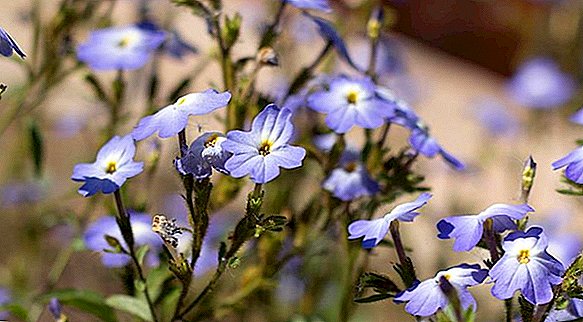
- Sticky - The height of the shrub of this variety is 30 cm. This browallia is named because of the hairs that fit snugly to the stem. Inflorescences plentifully shower a plant, they are small, blue color with a white center. In the garden, the flower may bloom before the start of frost.

- Alba - a variety of the previous variety, has white flowers with a yellow center. Suitable for breeding in rooms.

- Sapphire - The bush is low, up to 20 cm in height. He acquired the name due to the blue shade of his colors. Blooms constantly throughout the year.

- Blue bell - A hybrid flower that is unpretentious in the care. Spherical bush grows up to 35 cm in height. Buds are formed in the third month after sowing. The diameter of the flowers - 3 cm, their color is blue with different shades.

- Brullalia marina bell - the same as the previous variety, is a hybrid. It has small inflorescences with a diameter of about 2 cm. It begins to form buds in the second month after sowing. The flowers are blue.

- Silver bell - is a hybrid. The inflorescences resemble a five-pointed star in shape, their diameter is 3 cm, the color is white.

Application
Some varieties of brutally can be maintained not only in indoor conditions, but also on the loggias, balconies, and also in the garden, because they can bloom in such conditions before the start of frosts. Flowers not only decorate, but also fill your home with a pleasant aroma.
Did you know? Bovallia appeared in Europe in 1846. It received its name in honor of the Swedish bishop, doctor and botanist Johannes Bruvallya.
Conditions for successful home cultivation
Brovalia is an undemanding plant, but in order to grow this wonderful flower, you must follow the rules of caring for it. To do this, you need to water and cut dried shoots. In addition, other, equally important points, which you will learn more about, are referred to the care procedures. 
Choosing a place
This type of indoor plants belongs to the heat-loving, but it does not tolerate sunlight on the foliage, because they can get burned. But with a lack of light, the flower will bloom badly. For indoor maintenance, it is better to put it on a well-lit window, with a slight shade, and if you grow a plant on a balcony or in a garden, it should be placed on the east side. At the same time the chosen place should be without drafts.
Did you know? Brovalliya belongs to the family of solanaceae, and therefore is a close relative of potatoes and tomatoes.
Air temperature and humidity
Temperature and humidity are important for the flower, because cold or heat can have a bad effect on the plant.
Consider what these indicators should be at different times of the year:
- In the spring lighting should be moderate. At this time of year it is better to place a flower in the western or eastern side of the room. Humidity should be 60-70%, for this you can use wet fillers, which are placed on a tray (moss, peat or pebbles). You can also put next to the flower tank with water, which will gradually evaporate. Every day, the plant must be sprayed with warm water, but it should not fall on the inflorescences, because they will stain and they may fall. The temperature during this period should be + 18 ... + 20 ° С.
- Summer The flower can be put on the balcony or taken out into the garden, but at the same time it should be protected from direct sunlight and strong wind. Humidity should be the same as in the spring, but the temperature of the content rises to + 25 ° C. The temperature above is bad for the plant, because it can wither due to the heat.
- In the autumn the duration of the day should be prolonged with the help of additional lighting, because if there is a lack of light, the flower will not bloom. The temperature in the room where the basement is located should be in the range of + 18 ... + 20 ° С, while it is necessary to gradually lower it in order to prepare the plant for winter. Humidity should be 50-60%.
- In winter air temperature should be + 16 ... + 18 ° C, since cool air is useful for buds, and at high temperatures and a lack of light, the plant will begin to wilt and weaken. Humidity should be at the level of 40-50%.

Care Tips
Despite the fact that baurovliya is an unpretentious plant, it needs to pay special attention and implement timely watering, fertilizing, pruning and transplanting into a new pot. All these processes must be done in a certain sequence. Consider each of them in more detail.
Important! There is a toxic substance in the leaves and on the stem of the budvalia, therefore the flower is poisonous. It is necessary to keep it out of the reach of children and animals, and after working with it, wash hands thoroughly.
Watering
Soil moistening should be carried out regardless of where the flower is: in the garden, on the balcony or in the room. But it must be borne in mind that abundant watering can lead to rotting of the roots. To care for a potted plant choose lower watering. With this method, the roots will get enough moisture. Water for irrigation should be soft, room temperature. On hot days, you need to water the flower daily. In winter, it is enough to moisten the soil 1-3 times a week. 
Top dressing
In order for bravallia to please you with its flowers, it is necessary to enrich it with nutrients. Add fertilizer to the water for irrigation and feed the plant 1 time in 14 days. The composition of fertilizers must be formed from potassium and phosphorus, since these elements accompany flowering.
Sometimes budallia buds may not appear for a long time. This, in the first place, is a result of errors in flower care, in particular, planting bouvalla in a large pot, where roots in the soil grow in excess, due to which there is a shortage of minerals, light or excess nitrogen.
Learn more, how to feed indoor plants.
Pruning
Pruning is carried out not only to remove dried leaves and flowers from the bush, but also to form it. Young ends of the shoots need to pinch to the bush developed lateral buds. Removal of dry and wilted leaves and flowers is carried out during the flowering period.
In addition, pruning prolongs the life of the flower, because it removes dried inflorescences, old and extended shoots, which take away the vitality of the plant. For this procedure, use garden shears, which are carefully cut off the shoots. 
Transfer
Experienced flower growers know that during the flowering period it is impossible to transplant a flower. Brovalia - a delicate flower that does not tolerate a full transplant. It is best to apply the method of transshipment, which is that the plant is placed in a new pot along with a clod of old earth. This procedure should be carried out before flowering. The best soil for fermentation is a mixture of turf, sand, humus, hardwood in the ratio of 1: 1: 1: 1.
Important! Biennial bushes do not bloom as abundantly as young ones, and have small flowers. In this case, it is necessary to replace the plant with a new one, which can be grown from the seeds or cuttings of an old bush.
Reproduction at home
There are two ways of reproduction of this plant: using cuttings and seeds.
Consider each of them:
In order to propagate this flower with seed, you must pre-leave on the flower two boxes, each of which contains 10 seeds. Planting requires prepared soil. It is harvested from humus and sand in equal proportions or purchased in specialized stores ready mix.
The soil is placed in a box and make small depressions into which seeds are placed and moistened with a spray bottle. The box is covered with film or glass and placed in a well-lit place with a temperature of + 18 ... + 20 ° С. Every day you need to air landing for 2-3 hours, it is best to do it in the morning.  The first shoots will appear in 7 days. A full growth cycle usually takes from 8 to 14 days. After the seedlings germinate and their root system is strengthened, they can be transplanted into individual pots, using the dive method for this.
The first shoots will appear in 7 days. A full growth cycle usually takes from 8 to 14 days. After the seedlings germinate and their root system is strengthened, they can be transplanted into individual pots, using the dive method for this.
For breeding cuttings take cuttings from anywhere in the plant. They are rooted in a light substrate, can be in the sand or even in the water, organizing the cutting of the greenhouse from a plastic bag. When the roots of the plants are planted in separate containers.
Possible problems
When growing brovalia, there may be some problems that are associated not only with improper care, but also with the appearance of pests and diseases:
- Mealy dew - A common disease of such a flower. It appears as a white powdery deposit on the trunk and leaves of the flower. If it is not neutralized, the leaves will darken and dry. Favorable conditions for the development of this disease are high temperature and high humidity. In order to get rid of powdery mildew, it is necessary to treat the plant with fungicidal agents ("Healer" or "Topaz").

- Aphid - common plant pest. It looks like a black spot, consisting of a set of points. Aphid distorts the leaf shape of the brown fruit, changes its color, sucks the juice from the stem, which leads to the death of the flower. Most often aphids appear on plants that are contained on the street. To get rid of the pest, it is necessary to treat the flower with the preparations “Inta-vir”, “Aktara” or “Fozalon”, and cut off the affected parts of the plant.
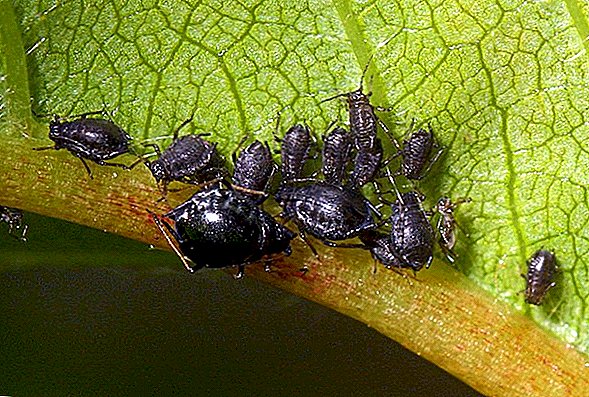
- White fly - is a pest affecting these flowers. Small insects settle on the back of the sheet. The main damage is caused by small larvae of the whitefly, which feed on the sap of the flower. Gradually, the plant begins to wither and die. To get rid of the larvae, it is necessary to treat the shrub with soapy water and cut off those parts of the plant that are already affected by the pest. To prevent the whitefly from attacking the brick, you can hang a sticky tape from flies next to the flowerpot.

- Spider mite - it can be seen on the web on the shoots and buds. It damages the plant with punctures, where dark spots appear over time. The mite does not tolerate high humidity, therefore, for the prevention of the disease, it is necessary to spray a bush from a spray bottle. If the flower is already infected, it is necessary to treat it with alcohol-containing means. It is also suitable tincture of calendula or garlic.
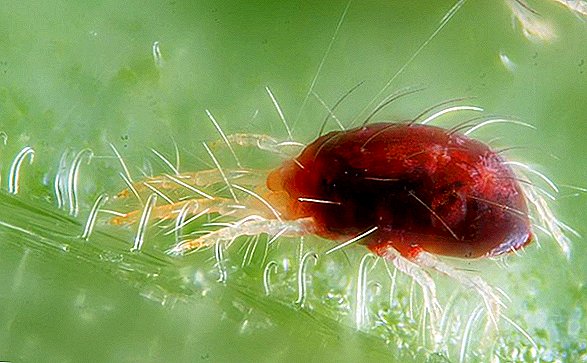
- Mealybug - creates a raid on the stem, similar to cotton wool. In addition, the parasite feeds on the juice of the flower, it also leaves poisonous substances at the site of the bite, which, spreading through the stem, weakens the plant. In order to get rid of the pest, it is necessary to treat the bush with special means ("Inta-vir" or "Aktellik") and remove the affected areas of the plant.

By remaining faithful to the basic rules for the care of Brovallia, you can extend the life of the plant and make a beautiful garden right at home. The bush for many years will delight you with its amazing colors, exude a delicate floral aroma and create an atmosphere of comfort in your home.















